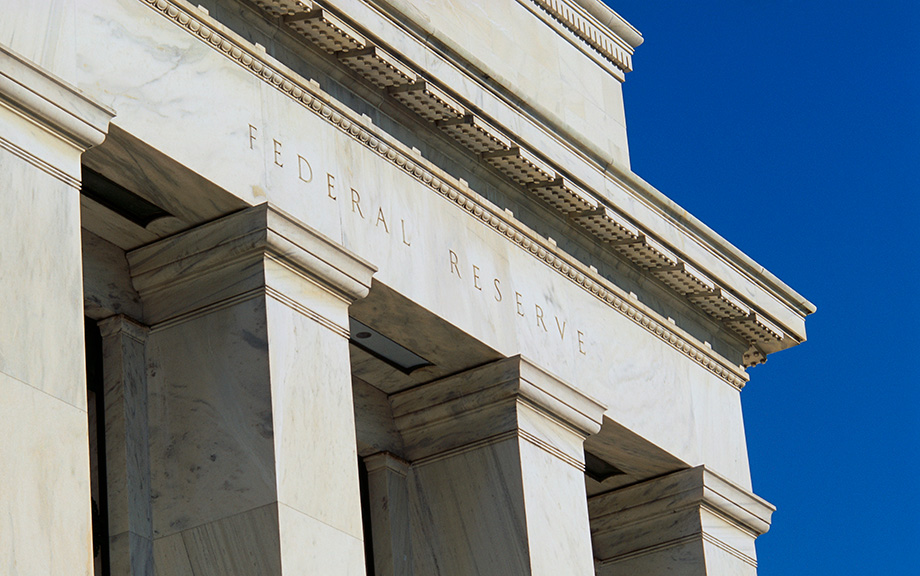The Future of Payment Infrastructure Could Be Permissionless
Rod Garratt and Michael Junho Lee

Following the recent passage of legislation in the U.S., payment stablecoins seem to be on the brink of wider-scale adoption and explosive growth in market capitalization. In this post, we contend that the driving factor is not their proximity to digital cash instruments, but rather how they are transferred—via global, open-access, peer-to-peer systems, or “permissionless blockchains,” for short.
How Businesses Set Prices—In Their Own Words
Wändi Bruine de Bruin, Keshav Dogra, Sebastian Heise, Edward S. Knotek II, Brent H. Meyer, Robert W. Rich, Raphael S. Schoenle, Giorgio Topa, and Wilbert van der Klaauw

There has been a lot of interest in firms’ pricing decisions in the past few years—both during the inflation surge of 2021-23 and in the more recent rounds of tariff increases. In this post, we let firms speak for themselves about what factors they consider when adjusting prices in response to various shocks. The analysis is based on an ongoing research project, joint with the Atlanta and Cleveland Federal Reserve Banks, on how businesses set prices and the extent of passthrough of cost increases. In particular, we leverage the qualitative portion of the study based on open-ended interviews with senior decision-makers on how they approach pricing decisions in their firms. Rather than a uniform approach, a very nuanced picture emerges of businesses trying to balance competing objectives while keeping an eye on demand conditions for their products as well as on their direct competitors’ behavior in the market.
Is Monetary Policy Still Seasonal?
Richard Crump, Keshav Dogra, and Dennis Kongoli

A 2012 Liberty Street Economics post noted that U.S. monetary policy exhibits a surprising degree of seasonal behavior: over the 1987-2008 period, the Federal Reserve was much more likely to lower interest rates (or abstain from raising rates) in the first month of each quarter than in the two subsequent months. Thirteen years later, we revisit that analysis to investigate whether the seasonal pattern in monetary policy still holds today, in the wake of a rate hiking cycle, a pandemic, a surge in inflation, and a second round of rate hikes. We find that the pattern has indeed continued; however, unlike in the earlier sample period, it can be completely explained by the timing of the FOMC calendar.
Banks Develop a Nonbank Footprint to Better Manage Liquidity Needs
Nicola Cetorelli and Saketh Prazad

In a previous post, we documented how, over the past five decades, the typical U.S. bank has evolved from an entity mainly focused on deposit taking and loan making to a more diversified conglomerate also incorporating a variety of nonbank activities. In this post, we show that an important driver of the evolution of this new organizational form is the desire of banks to efficiently manage liquidity needs.
U.S. Banks Have Developed a Significant Nonbank Footprint
Nicola Cetorelli and Saketh Prazad

In light of the rapid growth of nonbank financial institutions (NBFIs), many have argued that bank-led financial intermediation is on the decline, based on the traditional notion that banks operate to take in deposits and make loans. However, we argue that deposit-taking and loan-making have not accurately characterized U.S. banking operations in recent decades. Instead, as we propose in this post, absent regulatory restrictions, banks naturally expand their boundaries to include NBFI subsidiaries. A significant component of the growth of NBFIs has in fact taken place inside the boundaries of banking firms.
How Has Treasury Market Liquidity Fared in 2025?
Michael J. Fleming

In 2025, the Federal Reserve has cut interest rates, trade policy has shifted abruptly, and economic policy uncertainty has increased. How have these developments affected the functioning of the key U.S. Treasury securities market? In this post, we return to some familiar metrics to assess the recent behavior of Treasury market liquidity. We find that liquidity briefly worsened around the April 2025 tariff announcements but that its relation to Treasury volatility has been similar to what it was in the past.
Economic Capital: A Better Measure of Bank Failure?
Beverly Hirtle and Matthew C. Plosser

Bank failures and distress can be costly to the economy, causing losses to creditors and reducing the flow of credit and other financial intermediation services. Thus, there is significant value in being able to identify “at risk” banks in a timely and accurate way. In a previous post, we presented a new solvency metric, Economic Capital, and showed how solvency risks in the U.S. banking industry have evolved over time according to this measure. In this post, we continue to draw on our recent Staff Report to present analysis showing that Economic Capital identifies failing banks earlier and more accurately than more conventional solvency measures.
Banking System Vulnerability: 2025 Update
Matteo Crosignani, Thomas Eisenbach, and Fulvia Fringuellotti

As in previous years, we provide in this post an update on the vulnerability of the U.S. banking system based on four analytical models that capture different aspects of this vulnerability. We use data through 2025:Q2 for our analysis, and also discuss how the vulnerability measures have changed since our last update one year ago.










 RSS Feed
RSS Feed Follow Liberty Street Economics
Follow Liberty Street Economics